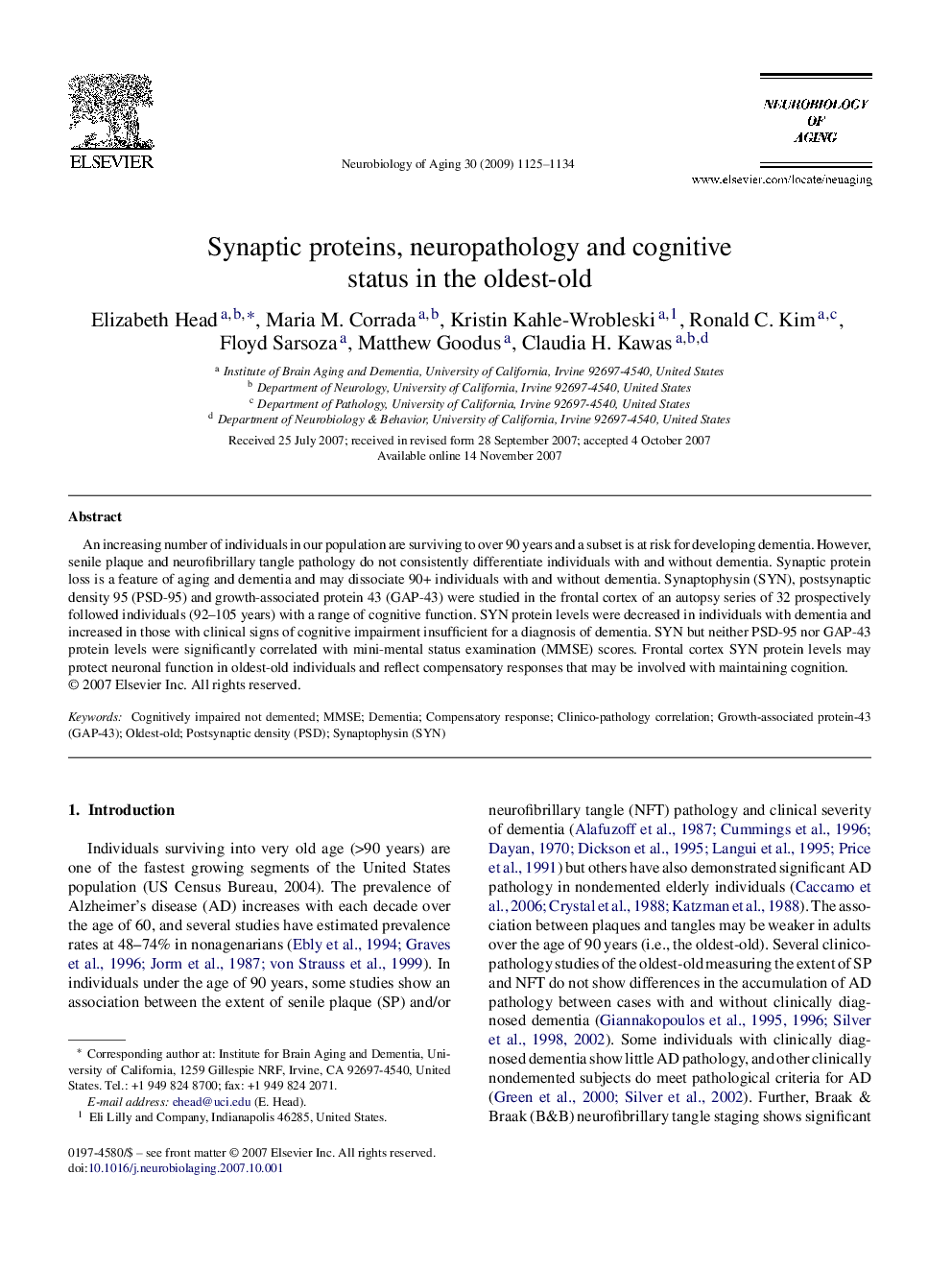| Article ID | Journal | Published Year | Pages | File Type |
|---|---|---|---|---|
| 330265 | Neurobiology of Aging | 2009 | 10 Pages |
An increasing number of individuals in our population are surviving to over 90 years and a subset is at risk for developing dementia. However, senile plaque and neurofibrillary tangle pathology do not consistently differentiate individuals with and without dementia. Synaptic protein loss is a feature of aging and dementia and may dissociate 90+ individuals with and without dementia. Synaptophysin (SYN), postsynaptic density 95 (PSD-95) and growth-associated protein 43 (GAP-43) were studied in the frontal cortex of an autopsy series of 32 prospectively followed individuals (92–105 years) with a range of cognitive function. SYN protein levels were decreased in individuals with dementia and increased in those with clinical signs of cognitive impairment insufficient for a diagnosis of dementia. SYN but neither PSD-95 nor GAP-43 protein levels were significantly correlated with mini-mental status examination (MMSE) scores. Frontal cortex SYN protein levels may protect neuronal function in oldest-old individuals and reflect compensatory responses that may be involved with maintaining cognition.
